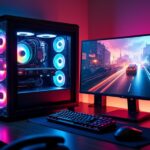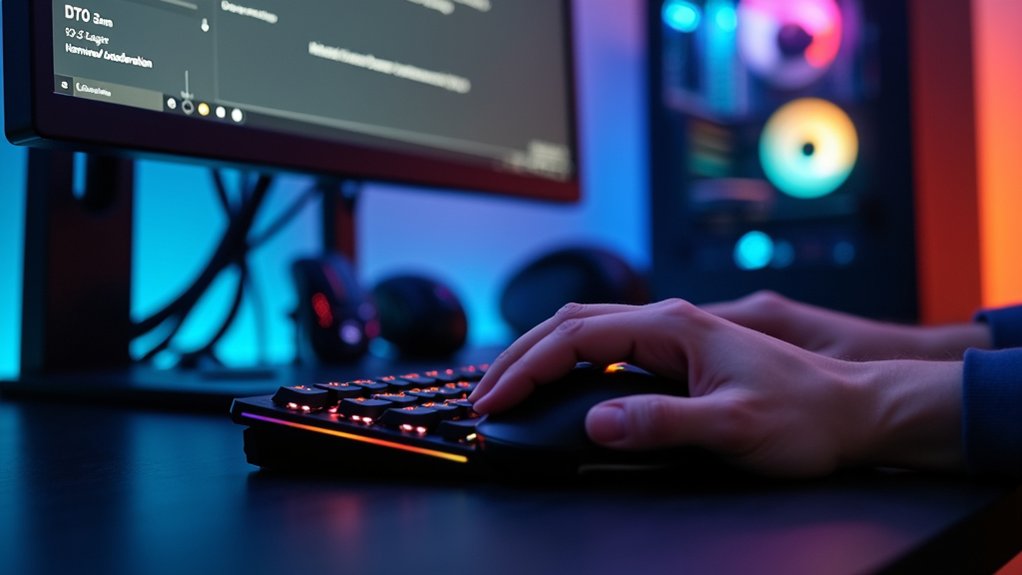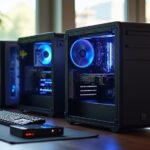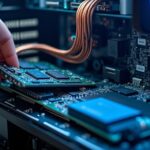
Best video cards and PC specs for 4K gaming
Keen to unlock true 4K gaming performance? Discover which video cards and PC specs deliver stunning visuals—your ultimate setup awaits just ahead.
If you’ve ever encountered strange visual glitches or unexpected crashes while gaming, hardware acceleration might be the culprit. Sometimes, turning off hardware acceleration can resolve compatibility issues, especially with older games or certain graphics cards. You might be surprised at how a simple tweak in your system settings can enhance your gaming experience. Before diving in, it’s crucial to understand what hardware acceleration does and why disabling it could be beneficial for your gaming setup. By turning off hardware acceleration, you can potentially resolve those pesky issues and enjoy a smoother gaming session.

When diving into the world of computer gaming, hardware acceleration is your secret weapon for unlocking peak performance. By transferring intensive tasks from your CPU to specialized hardware like your GPU, hardware acceleration significantly enhances your gaming experience.
This technology not only speeds up graphics rendering but also ensures complex calculations are handled more efficiently, resulting in smoother gameplay and stunning visuals.
With hardware acceleration, gamers can enjoy reduced lag and an overall more immersive experience. This technology is a must-have feature embedded in many modern games and gaming platforms.
Embrace hardware acceleration to elevate your gaming sessions to new heights, ensuring you stay ahead in the fast-paced world of technology and gaming.
Hardware acceleration can often enhance your gaming experience, but there are times when turning it off can actually be beneficial.
Disabling hardware acceleration can help resolve graphical glitches, crashes, or stuttering that you might face in certain games. This issue is especially prevalent in older titles or poorly optimized software that struggle with advanced hardware features.
Moreover, turning off hardware acceleration can also address problems like overheating, higher power consumption, or compatibility issues with specific graphics cards or drivers.
Before diving into any changes, it’s crucial to determine if hardware acceleration is currently enabled on your system.
Start by opening your graphics settings or the specific application you’re concerned about to find the hardware acceleration option. Look for a toggle or checkbox indicating if hardware acceleration is active. If it’s switched on, then hardware acceleration is in effect.
Understanding your current hardware acceleration status ensures you only make necessary tweaks to optimize your gaming performance.
If you’re looking to disable hardware acceleration across your system, Windows makes it easy with its built-in settings.
To start, open your Start menu, type “Settings,” and click on “System.” Next, head over to the “Display” section and scroll down until you find “Graphics settings.”
In this section, you can turn off hardware acceleration by toggling off the hardware-accelerated GPU scheduling option. Remember to restart your computer to ensure the changes take effect.
Disabling hardware acceleration in this way will impact all compatible applications, offering a seamless experience across your system.
If you’re looking to take control of your device’s performance, turning off hardware acceleration can be a useful option.
To do this, you’ll need to dive into your graphics card’s control panel, whether you’re using NVIDIA or AMD. By accessing the NVIDIA Control Panel or the AMD Radeon Software, you can find settings related to “Hardware Acceleration.”
Adjust these settings to disable or reduce hardware acceleration as needed. This method provides a comprehensive way to manage hardware acceleration, allowing you to make changes that will affect all applications globally.
When it comes to optimizing your gaming experience, understanding hardware acceleration settings is crucial. Many games provide their own dedicated options within the graphics or advanced settings menus.
Look for terms like “hardware acceleration” or “GPU acceleration.” Adjusting these settings allows you to fine-tune performance and compatibility for individual games.
Once you’ve adjusted your hardware acceleration settings, it’s crucial to verify that these changes have taken effect and assess their impact on your gaming experience.
Launch your game and closely monitor its performance, focusing on frame rates, responsiveness, and any visual anomalies.
Utilizing built-in performance overlays or third-party tools can provide accurate measurements.
By comparing your current gameplay with how the game performed before the adjustments, you can gain insights into the effectiveness of your hardware acceleration tweaks.
Experiencing issues like sluggish gameplay, graphical glitches, or unstable frame rates after disabling hardware acceleration? You’re not alone. Disabling hardware acceleration can lead to unexpected problems, but there are ways to troubleshoot these issues effectively.
First, ensure your graphics drivers are up to date, as outdated drivers can cause performance hiccups. Restarting your system can also help clear any temporary conflicts that might be affecting performance.
If you’re having trouble with a specific game not launching or crashing, it’s a good idea to verify the game files through its platform. This step can often resolve compatibility issues and get your game running smoothly again.
In some cases, re-enabling hardware acceleration temporarily can help you determine if it’s indeed the root cause of the problem. By following these steps, you can address any issues resulting from disabling hardware acceleration and enjoy a smoother gaming experience.
Unlocking smooth gaming performance without hardware acceleration is entirely achievable through some smart strategies. Firstly, consider lowering your in-game graphics settings, such as resolution, texture quality, and shadows. This can significantly enhance your gaming experience. Additionally, close any unnecessary background applications to free up valuable system resources. Keeping your graphics drivers and operating system updated ensures optimal performance. If your system offers a game mode, make sure to enable it for a smoother experience. Lastly, regularly cleaning your hardware can prevent overheating and throttling, which are common culprits of slowed gaming performance. By following these tips, you can enjoy gaming without needing hardware acceleration.
To optimize your gaming experience, consider turning off hardware acceleration, especially if you’re experiencing glitches or compatibility issues. By disabling hardware acceleration, you gain more control over your gameplay. Ensure you check both your Windows settings and your graphics card’s control panel to make sure everything is configured correctly. After making these changes, test your games to see the improvements. Don’t be afraid to adjust other settings for peak performance. With a bit of fine-tuning, you can enjoy smoother and more reliable gaming tailored to your system. Remember, turning off hardware acceleration can be the key to unlocking a better gaming experience.

Keen to unlock true 4K gaming performance? Discover which video cards and PC specs deliver stunning visuals—your ultimate setup awaits just ahead.

Before buying a new video card, discover the crucial steps to ensure compatibility with your motherboard—one mistake could cost you.

On the fence about upgrading your gaming laptop's graphics card? Discover what's truly possible before you make your next move.

Considering a hardware upgrade? Check out which PC brands make swapping components a breeze—and discover the standout choice you might not expect.

Why does hardware form the backbone of every computer system, impacting everything from speed to security? Discover what makes it truly indispensable.

Know if your favorite games could be damaging your PC hardware—discover three crucial tips before your next gaming session surprises you.